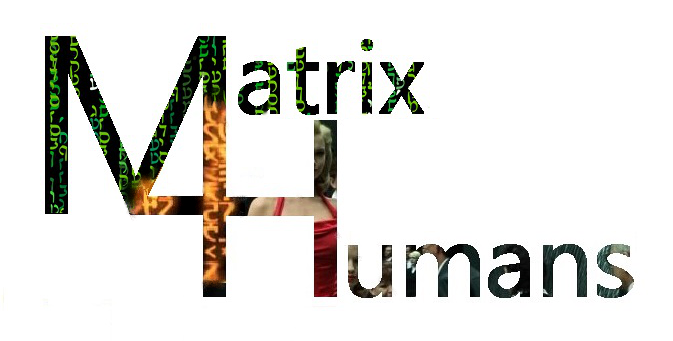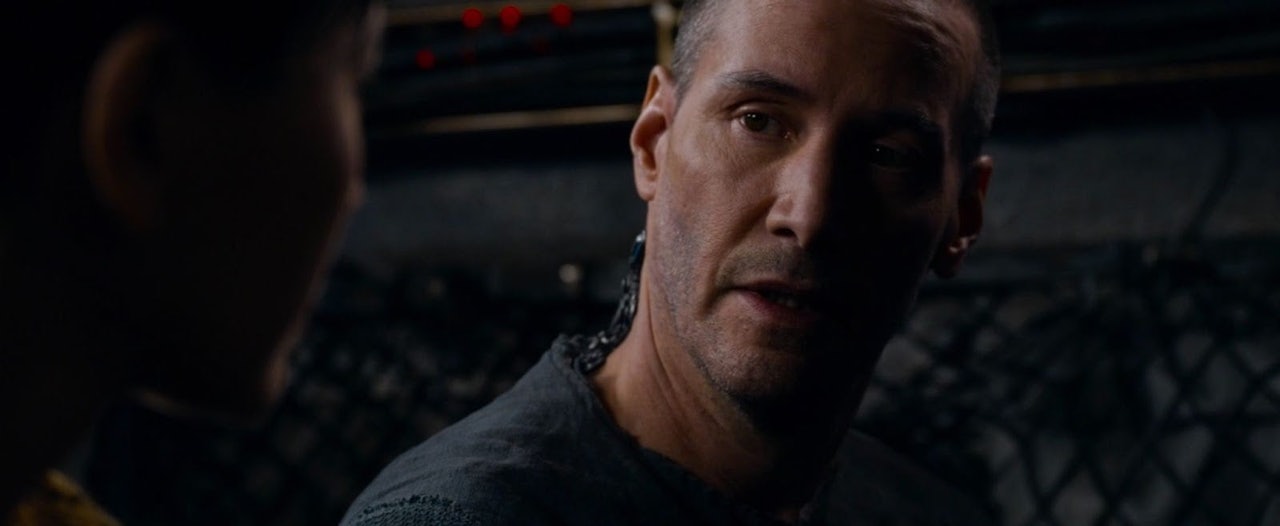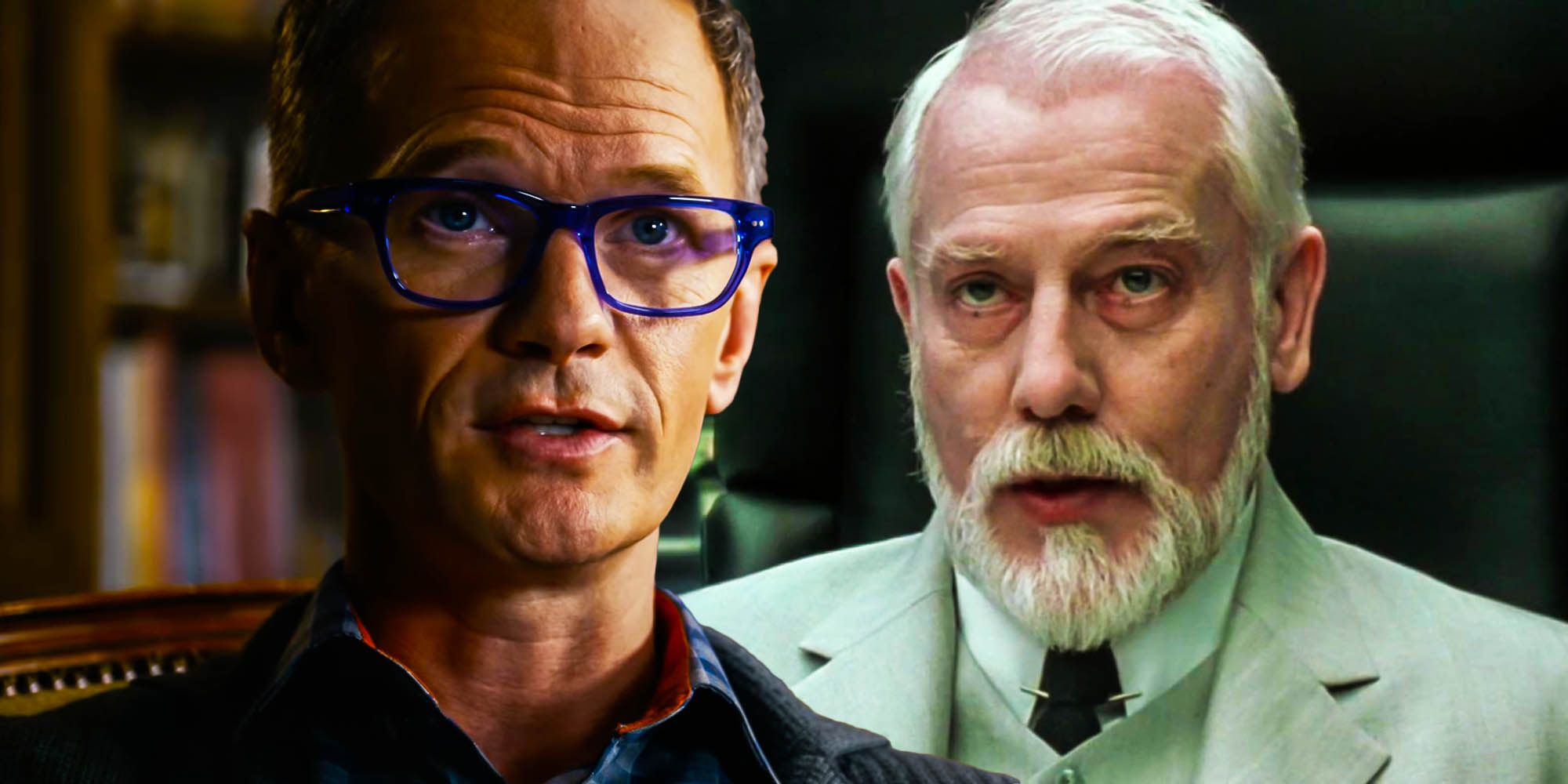The Matrix Resurrections brings us many illustrations of the unification process on the “return to the Source.” This article looks at several – some overt and others a little more hidden.
Again, this reflects the spiritual concept behind the story:
“The world is on a progressive march towards redemptive consciousness. Humanity is seeking oneness.”
Rabbi Y.Y. Jacobson
As a quick ‘review,’ here again, is an overview of the structure of the Matrix movies with our chart:
- The Source = the unknowable ‘transcendent’ (outside of existence) aspect of the Creator.
- The World of the Architect = the ‘knowable’ immanent aspect of the Creator and beginning of ‘existence.’
- The World of the Oracle = the beginning of, and the highest level within, actual ‘creation.’
- The Program world = the intermediate world of creation – that of ‘angels’ who oversee and help run things
- The Matrix world = the lowest world of creation – our “physical existence” and world of ‘concealment’
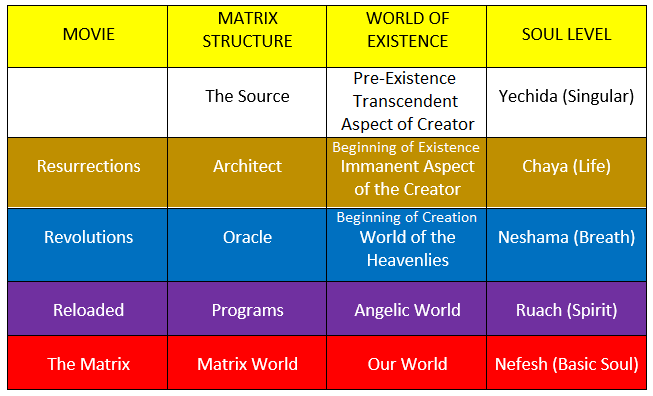
This fourth step of the journey ‘upward’ places us at the level of Emanation (the beginning of existence), closest to the Source. This level is all about “composite unity.”
This is a VERY different aspect of reality compared to the three encountered thus far.
The essential distinction between emanation, and (the three of) creation, formation & making, is that the reality of disparateness and multiplicity is in the worlds of creation, formation & making, as opposed to perfect unity in the world of emanation.
Song of the Soul, Yechiel Bar-Lev
As discussed, this is the level of the Architect/Analyst, the ‘Creator.’ This is why Smith gives Neo this friendly warning:
Trust me. You’re not ready for him.
The Unification of Morpheus
Bugs: Who are you? What do you have to do?
Morpheus: I am… Morpheus. And I have to find Neo.
As we come to learn, there was a lot more to this answer than what we may have originally thought. The figure of Morpheus may be “a new version” at this 4th level, yet in essence, the character remains the same.
First, a question about the ‘original’ Morpheus.
Why did the Oracle, in the first movie, say “Without him, we’re lost”?
In the kabbalistic scheme, Morpheus primarily represents two main concepts. (We discuss these in more detail in his Character Profile.) One of these is that of “the righteous person” (tzaddik), one who makes the connection between our world ‘below’ and the spiritual realms ‘above,” and assists others in doing so.
In these movies, this is represented by how Morpheus brings people out of the Matrix concealment and reveals the greater reality to them.
The other aspect of Morpheus seen in the trilogy was one associated with the “right side” dimensions of belief, lovingkindness, and proactive action. The Matrix Resurrections takes both of these concepts to a more unified state.
This is seen in his own self-description that he relates to Neo:
“As to my role in all this, my best guess is that you wrote me as an algorithmic reflection of two forces that helped you become you, Morpheus and Agent Smith. A combo pack of counterprogramming that was… [inhales] Let’s just say, more than a little bit crazy-making.”
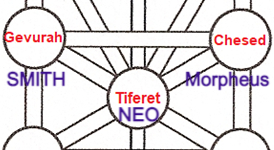
Morpheus was created by Neo by uniting the right and left emanations of lovingkindness (chesed) and judgment (gevurah) as represented by the original Morpheus and Smith.
The problem here is that chesed and gevurah don’t mix. They are the true ‘opposites’ of expansion and restriction within our existence — the main attributes representing the dualistic-binary nature of existence.
These conflicting emanations, “rolled into one,” is why Morpheus states that this combination was, “more than a little bit crazy-making.”
This “new Morpheus” comes into existence because of a desire inside Neo himself. He acts on the ‘spark’ within. (See our article on Levels of the Soul.) This occurs in each of the four movies, where Neo needs to be ‘woken up’ in order to continue on his path. He knew he needed ‘something’ – in this case, he initiated the modal.
Kabbalistically, such actions seeking spiritual truth, are “rewarded by heaven.” This goes back to what Trinity told him at their very first encounter:
“The answer is out there, Neo. It’s looking for you. And it will find you, if you want it to.”
Smith: “Not So Bad After All” Part 2
The reference is to what Smith told Sati in The Matrix Revolutions, as we discuss in his character profile.
Neo’s latest confrontation with Smith in the warehouse fight scene adds a couple of aspects to the concept of unification found in The Matrix Resurrections.
First, Smith informs Neo that the Analyst (our “4th-level Architect”) utilized them in a connected state:
You never appreciated our relationship. Not like The Analyst. … He used our bond and turned it into a chain.
Smith later “goes deep,” discussing the duality or binary nature of existence:
“I’ve been thinking about us, Tom. Look how binary is the form, the nature of things. Ones and zeros. Light and dark. Choice and its absence. Anderson and Smith.”
This idea that “the nature of things” is the ‘binary’ or ‘dualistic’ form of existence is a key kabbalistic concept.
What is the dominant factor that maintains the interest in life? What is the dominant factor that actually creates meaning in life? That’s the exercise of choice. If you did not have the capacity to choose, life would be meaningless … If we did not have the capacity to do the opposite of what’s good – even destroy, even kill, then there would not be the capacity to exercise choice. … That’s the ultimate element that makes us who we are … The exercise of choice. How does that operate? When we get to the nefesh level – the final level of the soul. (See chart above.) The level that actually connects to the material world (i.e., the Matrix world), that level splits into two – duality (‘binary’) Things come in twos. Our perception of reality is dimensionally understood in twos. Up-down, left-right, positive-negative, particle-wave. And that is because of our perception of nefesh splitting into two … one ego-centered, the part of us that relates to the materiality of life most profoundly … This knows no bounds. No boundaries. It does not know when to stop acquisition. The other is selflessness … connectedness to the higher spheres. We have a higher self and a lower self. The higher self creates the boundaries for the lower.
“Netzach, Hod and Yesod,” Rabbi Laibl Wolf
The origin of this dual-binary form of existence is said to go back to the concept of the “Tree of Knowledge of Good and Bad” in the book of Genesis.
Compare the language from this transcript to Smith’s words above:
In this instance, the particular area that we are considering trying to decipher is our motivation – what makes us tick. One of the interesting features of our motivation is our inner duality. Meaning that we basically operate on a two-track level. Sometimes we tend to do it this way, and sometimes we choose to do it that way. … Is there something more profound spiritually that seems to guide humanity? To the point that even the film industry dichotomizes between good and bad, especially in some of the contemporary science fiction movies of the day.
“The Secret of the Tree of Knowledge,” Rabbi Laibl Wolf
The mention of “contemporary science fiction movies” from this 2012 lecture is rather interesting.
When the Matrix Creeps Into Our World
The above is relevant, as duality and choice do not exist at the level of the Source – prior to existence. Even at our current fourth level of composite unity, choice is not ‘real.’
As Morpheus said to Neo:
Well, I could tell you that they’re standing by, waiting for you to make the choice to remain meekly incarcerated or bust the hell out of here and go and find Trinity. But that ain’t a choice.
This level of the Architect is a ‘taste’ of what’s to come. Kabbalah says that we will return to the original “choiceless singularity” at some point.
In one of those amazing ‘coincidences’ that follows the Matrix, the date of the movie’s major release, 12-22-21, relates directly to all of this.
The concept is fairly direct. Prior to ‘existence’ there was a singularity which is the Source (‘1’). This is followed by the four worlds of existence (“2-2-2-2”). These lead to a return to the Source (‘1’) Placed in a string (122221), you get the movie date of 12-22-21.
Seeing there were two movie dates that were rescheduled before this one, we can only think of Morpheus’ words:
“What happened, happened and could not have happened any other way.”
Sign, Sign, Everywhere a Sign
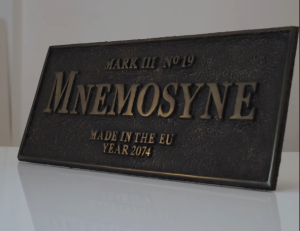
As we’ve alluded to in our Knowledge Base articles, the Wachowskis love to embed hints and clues throughout their movies. In the first Matrix film, the Nebuchadnezzar ship had a plaque with a specific religious reference (Mark 3:11) that played out at the end of Matrix Reloaded.
Here we have a new ship named the Mnemosyne. This is a reference to Greek mythology. Mnemosyne is the goddess of memory. This has obvious application as has been mentioned in a number of discussions on the new movie.
Looking deeper (naturally!) Mnemosyne was the union of her father Uranus (representing heaven) and Gaea (representing earth). Thus the name of this ship is symbolic of the state of unification of “above and below” going on in The Matrix Resurrections.
General Niobe and the City of Io
The theme of unification in this realm continues with Niobe, whom we had forecast would have a leadership role in our Character Profile of her (from 1.23.20) and article on the Elevation of the Feminine (from 10.12.20).
Niobe is the leader of the city named Io. Her ‘pragmatic’ nature, as seen in this exchange from The Matrix Revolutions, makes her well-qualified for this position:
Morpheus: You’ve never believed in The One.
Niobe: I still don’t.
Morpheus: Then why are you doing this?
Niobe: I believe in him.
Having said that, she is very protective of their accomplishment in the creation of the city of Io. So much so, that she places Neo into confinement to not put anything at risk.
She does a turnabout, however, allowing Neo to escape, though her pragmatism is tempered by some concern:
We’ve worked so hard to keep Io safe. This scares me.
A good leader does listen, and it would seem that Niobe may have been influenced by both Bugs’ comment about caring more about strawberries than minds, as well as Sati’s humble comment regarding having kept information away from her for the sake of Io being built.
In like manner to the name Mnemosyne, the name Io is also from Greek mythology. Again we have a name associated with the connection of above and below as Io was a mortal lover of the god Zeus and considered to be the first human woman to become the mother of a god’s child.
Conversely, Io the city was created by elements of “below and above.”
As Niobe explained:
“Because we needed synthients and DI like him. Zion was stuck in the past. Stuck in war. Stuck in a Matrix of its own. They believed that it had to be us or them. This city was built by us and them.“
Significantly, Niobe explains to Neo how what he accomplished caused the worlds of humans and programs/machines to come together in the new city of Io.
NIOBE: My pessimism of how long it took me to believe a world without war was possible. You gave me that. You gave that gift to us all. And it is the gift that continues to bear fruit.
This mirrors what Bugs said to Neo earlier:
BUGS: No. No, there was peace. You made it possible, and it changed everything.
This corresponds to the repair between physical and spiritual worlds in kabbalah – a very messianic concept.
The messiah will thus be a unifier of opposites. He will bring about the unification of the spiritual realms and our physical world.
“Moshiach and His Effect on the World,” Yitzi Hurwitz
Similarly, Kabbalistic teachings regarding the “Messianic Age,” tell of the physical Temple and its “heavenly predecessor” coming together as one.
For the Heavenly Temple will not be uprooted from its place. Rather, it will extend until it reaches the lower world, and then around it will be built a physical structure as fitting in this material world, and the two structures will be joined and become one and will never again separate. … Then there will be complete peace and happiness forever.
“Dwellings of the Supreme,” Moshe Chaim Luzzatto
Even the presentation of the strawberry, as a sign of what can be, relates to the Biblical narrative of redemption and the land of Israel someday manifesting great produce in the interim stage before the final redemption.
Follow the bouncing strawberry …
The Sheperd and the Sheeple
Another correlation to the interim stage found in The Matrix Resurrections is a ‘negative one,’ expressed by the character Sheperd to Neo. He relates how despite Neo’s previous success, and creation of this new Io world with its ability to produce real food, the will of the people to be free has waned.
There is a religious-based article on the redemption that connects the new community of Io, its garden, and Sheperd’s comment, as being signs of the interim period between the initial and final stages of redemption.
The comparisons are interesting:
During this initial phase of return, the scaffolding of a new country will be built … citrus groves will be planted, and in a once parched land, cherry tomatoes … and cutting-edge hydroponics will be invented … However, in this phase, the spirit, the soul of the nation, will be weak.
“Covid Ha’atzmaut” (Covid Redemption), Shimon Apisdorf
(For deeper insights, see our Knowledge Base articles on the Stages of the Matrix Prophecy and the Interim Period between what Neo first did and the final stage of the redemption.)
The Arrival of the Daughter
Besides Niobe’s advancement, another aspect of the “elevation of the feminine” was the return of Sati. Though this was a surprise to most, we have been discussing her “future role” and publishing numerous articles on her return for years. (Do a search for ‘Sati’ on our website!)
Niobe expressed the importance of Sati’s role in The Matrix Resurrections when they met at the well in the forest:
“I figured if there was anyone who could make sense of this mess, it would be you.”
The question here is, “Why would Sati be the one with this ability to “make sense” of things?”
A clue is their meeting at a well. The concept of ‘wells’ in kabbalistic teachings represents a connection to the deepest concept of wisdom, past and future. This is especially the case of the wells dug by Abraham, re-dug by his son Isaac, and the well his own son Jacob moved the cover off of, in the Biblical narrative.
The Zohar notes this connection: “Observe that Jacob when he sat by the well and saw the water rising up toward him, knew that there he would meet his destined wife; and so it was, as Scripture says: While he was yet speaking with them, Rachel came with her father’s sheep.And it came to pass when Jacob saw Rachel … It was the same with Moses, who, when he sat down by the well, as soon as he saw the water rising toward him knew that there he would meet his destined wife; and so indeed it turned out, as we read: And the shepherds came and drove them away … (Exodus 2:17), with the result that there he met with Zipporah. (Zohar 1:152b)
“Rachel and Leah,” Ari Kahn
Sati’s connection to the past, goes beyond her own years, connecting to her father. (Father=Chokhmah/Wisdom in kabbalah.)
The concept of the ‘well’ is also used to represent one of the names of God (Adonay), that being the one connected with the aspect of the Shekinah (the divine presence) and Malkhut, the lowest of the emanations into which wisdom descends:
Sometimes the name Adonay is referred to by its cognomen be’er (well). The rationale for this is that Adonay can be seen as the “well of living waters” where all the energy and the emanations from above gather, as it is written, “You are a garden spring, a well (be’er) of fresh water, a rill of Lebanon (Song of Song 4:15).
“Sha’are Orah” (Gates of Light) Yosef Gikatilla, 12th century
It should be noted that Sati performs her actions to bring Trinity “back to life,” by working through the well, connecting her to this “well of living waters” called, be’er mayim chayim. Note the connection between the terms ‘chayim’ (living) and chayah (life), which is the fourth level of the soul relating to this, the fourth film.
The ‘new’ connection between Sati and Neo (“the son”) and how that relates to her father Rama Kandra, is a deep concept and critical to the coming redemption of humans and the end of the Matrix:
In a primeval state, the daughter is fully integrated in the father, together constituting the androgynous form of divine wisdom. Indeed in this state, it is not even appropriate to conceive of father and daughter as distinct hypostases — but in a secondary stage, the daughter splits off from the father, and she is given to the son so that the original balance of gender will be restored. In order to restore that balance, the daughter had to be given to the son for she could no longer pair with the father.
“Language, Eros, Being: Kabbalistic Hermeneutics and Poetic Imagination,” Elliot R. Wolfson
Sati described her role in the unification of worlds as part of her own father’s wisdom:
“My father knew we’d meet again. … When my father realized how the Anomaleum was going to be used, he covertly transferred the designs to me.”
This wisdom resulted in another aspect of “4th level of unification” that is the essence of The Matrix Resurrections:
“This city needed to be built for your people as well as mine.”
In addition, her response to it not being necessary for Trinity to “take the red pill” in the rescue scenario indicates a new world of collective consciousness possibilities not present at the previous three levels:
“… Kujaku and I are transferring her consciousness onto the ship.”
The Rise of Trinity
Our final aspect of the elevation of the feminine (of the three mentioned in our 2020 article) has to do with Trinity, and her relationship with Neo, especially at this level of unity.
As the Analyst stated to Neo:
“It was never just you. Alone, neither of you is of any particular value. Like acids and bases, you’re dangerous when mixed together. Every sim where you two bonded… Let’s just say bad things happened.”
This is one of the deepest concepts among the four movies – so we’re going to dedicate a separate article to it.
For now, check out our article on some of the ‘mathematics’ behind it!
Last But Not Least
There is another character that represents a very deep aspect of unification, and that is Bugs. We’re dedicating a separate article to this.
